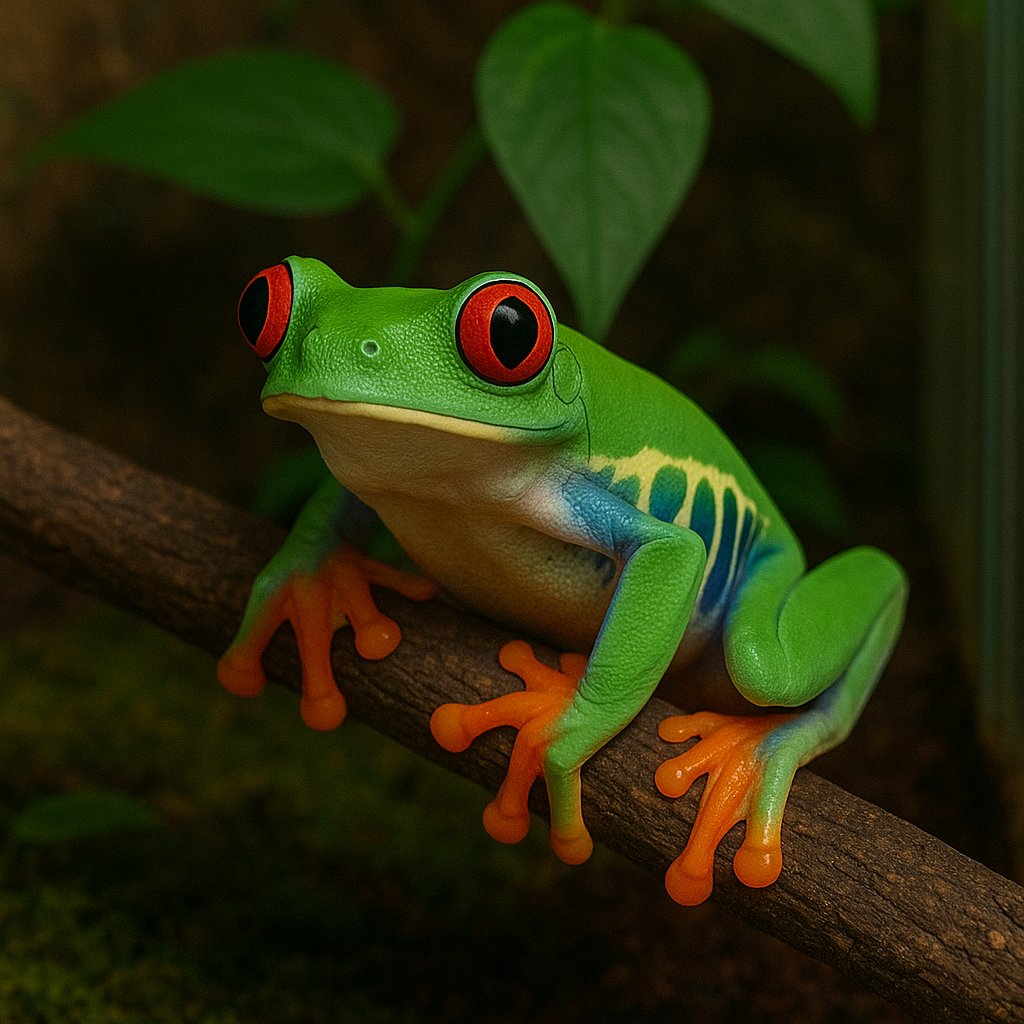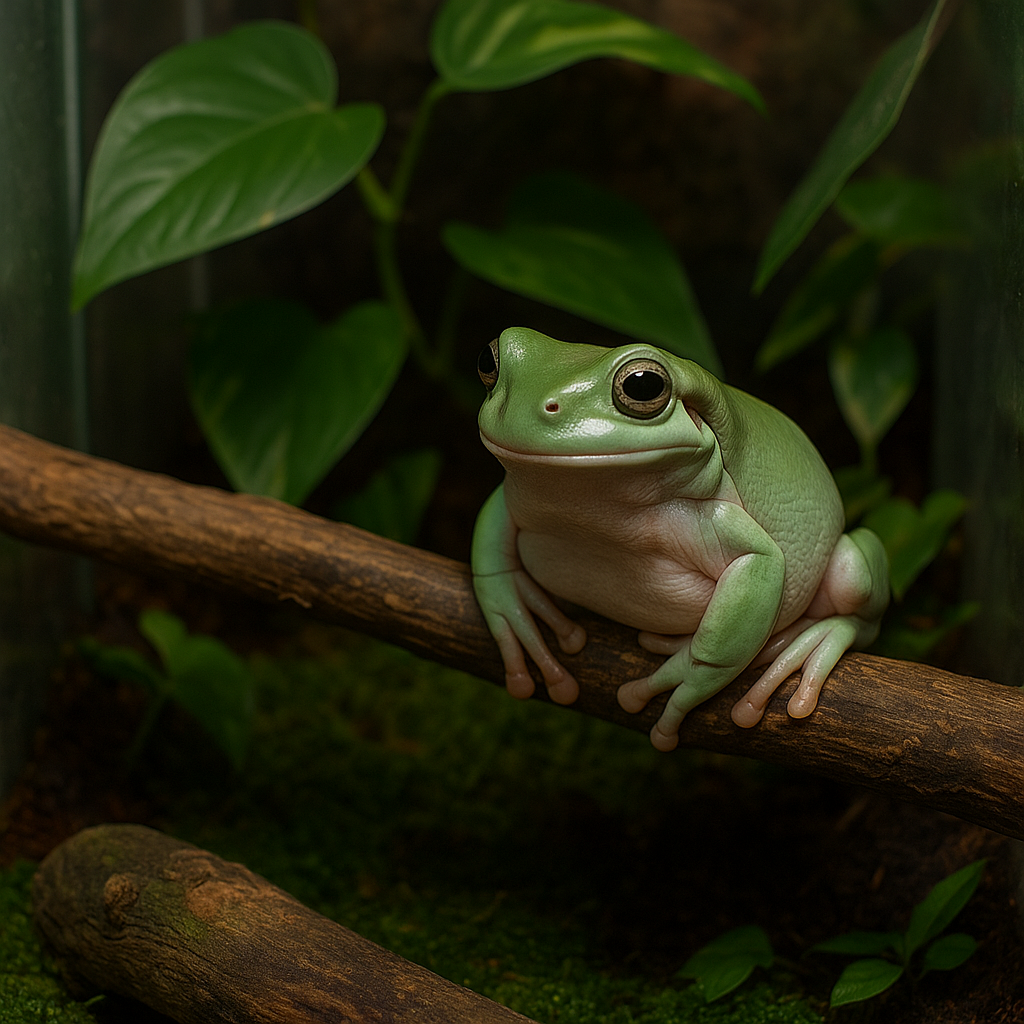Raising dart froglets from freshly morphed juveniles into healthy, vibrant adults is a key part of successful frog keeping—but it comes with its own challenges. A well-designed frog growout tub gives your froglets the safe space they need to absorb their tails, access clean water, eat microfauna, and develop in a low-stress, bioactive environment.
In this complete guide, we’ll walk you through how to set up a froglet grow-out enclosure using practical steps, proven methods, and products we personally use at Frogfather HQ.
Why Use a Froglet Growout Tub?
While adult dart frogs thrive in large display vivariums, young froglets benefit from simpler, smaller enclosures where:
- Humidity and temperature are easier to control
- Fruit flies and springtails can be contained properly
- Monitoring growth and feeding is straightforward
- Microfauna establish quicker to handle waste and uneaten food
A good frog growout tub balances cleanliness with biological function—supporting natural development without overwhelming your frogs.

Choosing Your Growout Tub or Enclosure
Start with a sealed plastic tub or a purpose-built vivarium. It must:
- Prevent escapes (no gaps for fruit flies or froglets)
- Provide ventilation (but fine enough to block springtails)
- Offer both water and land areas
- Be easy to access for feeding and cleaning
✅ Recommended Product:
🟢 3D Vivarium for Isopods, Spiders & Froglets – Sliding Door, Lit & Vented – 25×30×25cm
This all-in-one enclosure includes built-in LED lighting, fine mesh vents, and a sliding door for easy access—ideal for froglet rearing without escape risks.
Water Area Setup: Let Froglets Absorb Their Tails Safely
Newly morphed dart frogs need access to water as they finish absorbing their tails. You can achieve this in three ways:
- A small shallow water cup with a slope they can walk into
- A corner pond built into the substrate
- A sloped filter foam ramp that dips into a water area
I personally use filter foam cut at a 45° angle, covering about 75% of the tub’s base and dipping into a water pool. This ensures:
- Constant access to moisture
- A walk-in water zone
- Easy substrate moisture control
Use reverse osmosis (RO) water with added minerals or mineral water. Avoid tap water unless properly dechlorinated.
To enrich the water, drop in a kibosha leaf or Indian almond leaf—this releases tannins that prevent bacterial build-up and mimic natural conditions.
Substrate and Bioactive Foundation
On top of the foam base, add a layer of quality substrate like ABG mix, coco fibre, or your favourite bioactive blend. Then:
- Inoculate with springtails and dwarf isopods
- Sprinkle a tiny amount of fish flakes to feed microfauna
- Let the tub sit for 2–4 weeks to allow populations to establish
This pre-seeding ensures your cleanup crew is ready to deal with froglet waste and uneaten food, keeping your enclosure healthy and odour-free.
Leaf Litter: Shelter and Microfauna Food
Cover the substrate with a thick layer of leaf litter. This provides:
- Hiding places
- Moisture retention
- Additional food for springtails and isopods
✅ Recommended Product:
🍂 Ficus Messelina Leaf Litter – UK Grown, 1L Bag
A clean, pesticide-free option that supports your bioactive cycle and makes the tub feel more natural.
You can also add small cork bark pieces, moss clumps, or a cutting of hardy terrarium plants like Philodendron, Syngonium, or Pothos.
Ventilation Without Escapes
One of the biggest challenges with a frog growout tub is balancing airflow with containment. Fruit flies and springtails will escape through anything larger than 1mm mesh.
Solutions:
- Use a jeweller’s drill bit (0.5–1mm) to hand-drill tiny air holes
- OR install screw-in 3D-printed mesh vents for a professional finish
✅ Recommended Product:
🛠️ 3D-Printed Screw-In Vents
These printable vent inserts are easy to install and designed specifically for fruit fly containment and airflow control.
Feeding Froglets in the Tub
Your froglets will mainly eat:
- Springtails (constantly present)
- Flightless fruit flies (fed 1–2x per day)
- Microfauna leftovers, like isopod nymphs or biofilm
Dust flies with:
- Calcium + D3: 2–3x per week
- Vitamin A or multivitamin: once per week
Ensure fruit flies don’t drown by providing climbing surfaces—leaf litter works great, or use a 3D-printed fruit fly feeding platform if available.
How Long Should Froglets Stay in the Growout Tub?
Most dart froglets stay in grow-out for 3 to 6 months, depending on:
- Species
- Growth rate
- Group size
- Enclosure conditions
Once they’re confident, feeding well, and hitting 1.5–2cm (depending on species), they can be transitioned into a permanent vivarium.
Maintenance Tips
| Task | Frequency |
|---|---|
| Mist tub lightly | Daily |
| Check water level | Daily |
| Change water (if cup) | Every 2–3 days |
| Wipe lid condensation | As needed |
| Feed microfauna | Weekly (flakes) |
| Replace leaf litter | Monthly |
| Full clean (if needed) | Every 3–6 months |
🧪 Summary Checklist: Frog Growout Tub Essentials
- ✅ Sealed tub or sliding-door vivarium
- ✅ Fine mesh vents or tiny drilled holes
- ✅ Moist filter foam base, 45° cut into water
- ✅ Clean RO or mineral water + tannins
- ✅ Bioactive substrate with springtails and isopods
- ✅ Leaf litter and optional live plants
- ✅ Daily access to food (springtails and fruit flies)
- ✅ Temp: 22–26°C | Humidity: 80–100%
Build It Like a Pro
At Frogfather, we’ve raised dozens of clutches using these exact methods and materials. Whether you’re breeding Dendrobates, Ranitomeya, or Ameerega, this growout setup gives your froglets the best possible start—bioactive, stress-free, and escape-proof.



